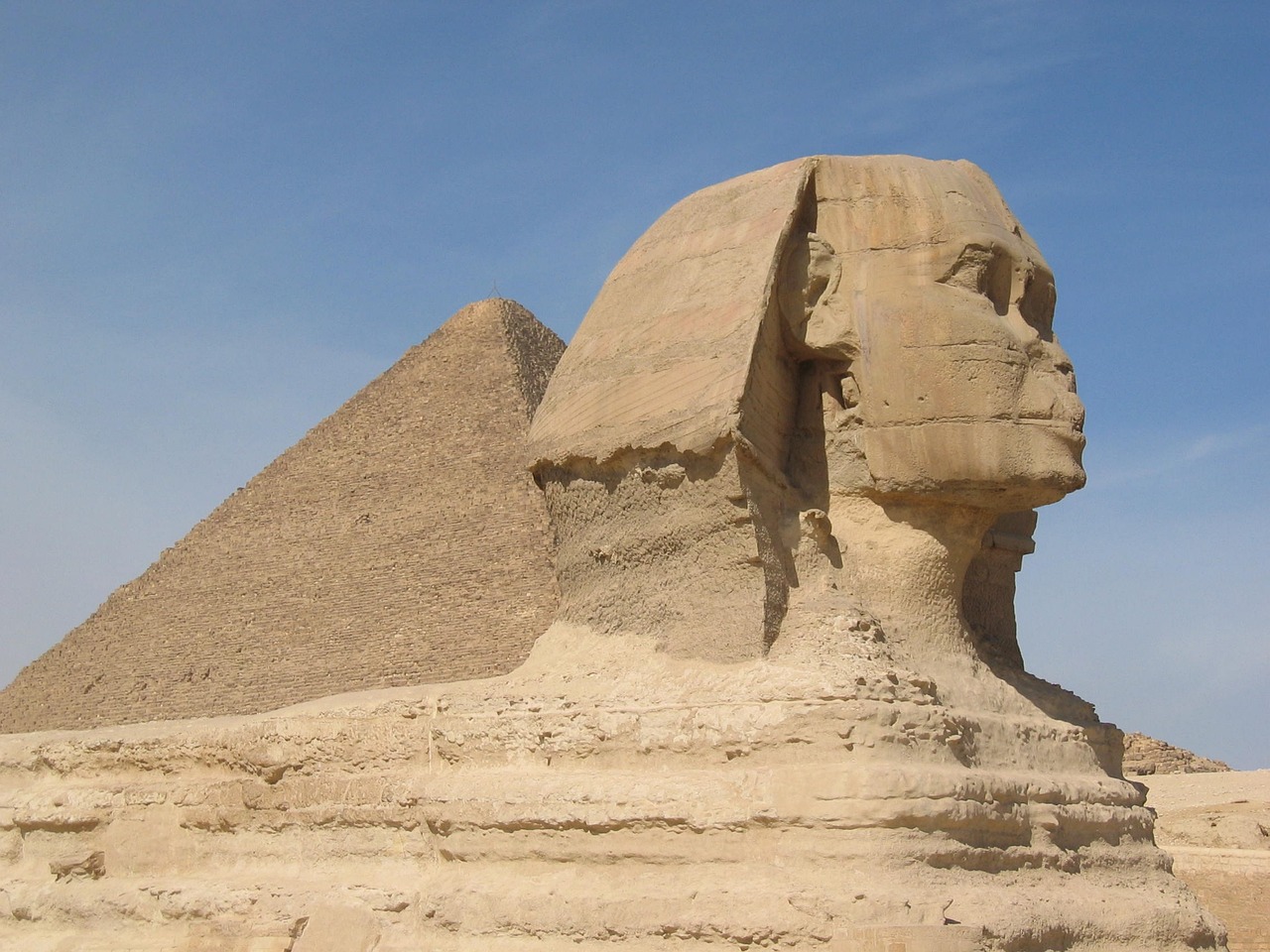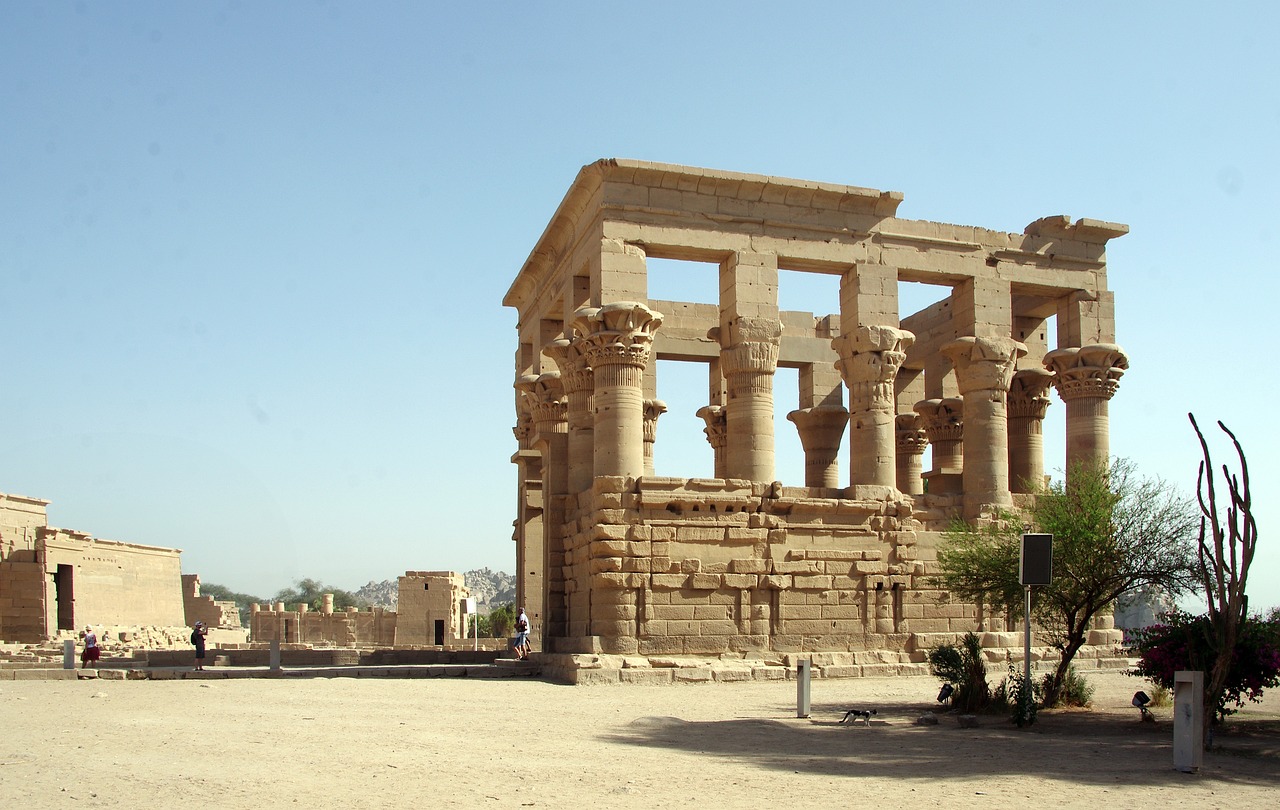The Legacy of Ancient Egypt - Contributions to Art and Science
Exploring the enduring impact of Ancient Egypt on the realms of art and science reveals a fascinating journey through time, where innovation and creativity thrived in harmony. The ancient Egyptians left behind a legacy that continues to shape our understanding of artistic expression and scientific exploration.

Ancient Egyptian Artistic Achievements
Exploring the enduring impact of Ancient Egypt on the realms of art and science, delving into the innovations and achievements that continue to influence these fields to this day.
Ancient Egypt boasts a rich artistic heritage that has captivated the world for millennia. Their artistic achievements encompass a wide array of mediums, from the iconic sculptures of pharaohs and gods to the intricate paintings adorning tomb walls. The grandeur of Ancient Egyptian architecture, exemplified by the monumental pyramids and temples, set new standards in construction and design, inspiring awe and admiration in all who beheld them.
The attention to detail and symbolism in Ancient Egyptian art reflected not only their artistic skill but also their deep spiritual beliefs and cultural values. Each artistic creation was infused with meaning, serving as a visual language that conveyed stories of gods, pharaohs, and the afterlife. The meticulous craftsmanship and enduring beauty of these artworks continue to inspire artists and designers around the world.
Moreover, the use of vivid colors, intricate patterns, and stylized forms in Ancient Egyptian art laid the foundation for artistic expression in subsequent civilizations. The influence of their artistic style can be seen in various aspects of modern culture, from graphic design and fashion to architecture and decorative arts. The legacy of Ancient Egyptian art lives on, resonating through the ages as a testament to the creativity and ingenuity of this ancient civilization.
- What is the significance of Ancient Egyptian art?
- How did Ancient Egyptian art influence modern art?
- What materials were commonly used in Ancient Egyptian art?
Ancient Egyptian art played a crucial role in expressing religious beliefs, recording historical events, and honoring the pharaohs. It served as a visual representation of their culture and beliefs, providing insights into the daily life and spiritual practices of the ancient Egyptians.
The artistic techniques and stylistic elements used by the Ancient Egyptians have had a lasting impact on modern art and design. From the use of symbolism and storytelling in artworks to the emphasis on geometric forms and symmetry, the influence of Ancient Egyptian art can be seen in various artistic movements and genres.
Ancient Egyptian artists primarily used natural materials such as limestone, sandstone, wood, and precious metals like gold and silver. They also utilized pigments made from minerals and plant extracts to create vibrant colors in their paintings and sculptures.

Ancient Egyptian Scientific Advancements
Ancient Egypt was not only a cradle of art and culture but also a hub of scientific advancements that laid the foundation for many modern disciplines. The ancient Egyptians made significant strides in various scientific fields, showcasing their ingenuity and knowledge that continue to astonish researchers and historians today.
One of the most remarkable scientific achievements of Ancient Egypt was their understanding of astronomy. The alignment of the pyramids and temples with celestial bodies demonstrates their advanced knowledge of the stars and their movements. The precision with which these structures were built reflects the Egyptians' keen observation and mathematical prowess, allowing them to create architectural wonders that stand the test of time.
In the realm of medicine, the ancient Egyptians were pioneers in healthcare practices. They developed sophisticated surgical techniques, treating injuries and illnesses with a level of skill that was unprecedented for their time. Additionally, their extensive knowledge of herbal remedies and medicinal plants highlights their holistic approach to healing, which influenced medical practices for centuries to come.
Furthermore, the ancient Egyptians excelled in mathematics, utilizing numerical concepts in various aspects of their society. Their use of fractions and geometry in construction projects like the pyramids showcases their advanced mathematical understanding. By applying these principles to real-world applications, the Egyptians were able to create monumental structures with remarkable precision and complexity.
Overall, the scientific advancements of Ancient Egypt continue to inspire awe and admiration for the ingenuity of this ancient civilization. Their contributions to astronomy, medicine, and mathematics have left an indelible mark on the history of science, shaping the way we perceive the world and pushing the boundaries of human knowledge.

Hieroglyphics: The Ancient Egyptian Writing System
One of the most fascinating aspects of Ancient Egypt is their sophisticated writing system known as hieroglyphics. Hieroglyphics were not just simple symbols; they were a complex combination of pictorial representations, phonetic signs, and ideograms. These intricate characters were used to record important information, document historical events, and communicate both mundane and sacred messages.
Ancient Egyptians believed that writing was a gift from the gods, and hieroglyphics were considered a sacred form of communication. The scribes, who were highly respected individuals in society, were responsible for inscribing these symbols on various surfaces such as papyrus, stone, and temple walls. Each hieroglyphic symbol had its own meaning and could represent objects, sounds, or ideas.
Deciphering hieroglyphics was a monumental task that puzzled scholars for centuries until the discovery of the Rosetta Stone, which contained inscriptions in three scripts: hieroglyphics, Demotic, and Greek. This breakthrough allowed linguists like Jean-François Champollion to finally unlock the secrets of the ancient Egyptian language and understand the meaning behind the intricate hieroglyphic symbols.
The complexity and beauty of hieroglyphics not only served a practical purpose but also held deep cultural and religious significance. Symbols such as the Ankh (representing life), the Eye of Horus (symbolizing protection), and the Scarab (associated with rebirth) were commonly used in hieroglyphic inscriptions, reflecting the spiritual beliefs and mythology of the ancient Egyptians.
Understanding hieroglyphics provides a unique glimpse into the mindset and worldview of the ancient Egyptians, revealing their reverence for the written word and the power of language to convey meaning beyond mere words. The legacy of hieroglyphics lives on in the study of ancient languages, the appreciation of symbolic art, and the fascination with a civilization that left behind a timeless script etched in stone.

Ancient Egyptian Medicine and Healing Practices
Ancient Egyptian medicine and healing practices were highly advanced for their time, showcasing a deep understanding of the human body and the use of natural remedies. The ancient Egyptians believed that health was closely linked to maintaining a balance between the body's fluids, known as the four humors. They practiced a combination of magical rituals, herbal treatments, and surgical procedures to treat various ailments.
One of the key aspects of Ancient Egyptian medicine was their knowledge of anatomy, gained through the practice of mummification. By preserving and studying the bodies of the deceased, they were able to develop a rudimentary understanding of internal organs and their functions. This knowledge laid the foundation for their medical practices, including surgeries such as trepanation and setting broken bones.
Herbal medicine played a significant role in Ancient Egyptian healing practices, with physicians using a wide variety of plants and minerals to create remedies for different conditions. For example, the Ebers Papyrus, one of the oldest medical texts in existence, contains recipes for treating ailments ranging from headaches to digestive issues.
Ancient Egyptian healers also utilized incantations and amulets as part of their treatment methods, believing in the power of magic to aid in the healing process. These magical practices were intertwined with their medical knowledge, reflecting the holistic approach to healthcare that characterized ancient Egyptian medicine.
Overall, the medical practices of Ancient Egypt were a blend of science, magic, and spirituality, demonstrating a sophisticated understanding of the human body and the interconnectedness of physical and spiritual well-being.

Ancient Egyptian Mathematics and Geometry
Ancient Egyptian Mathematics and Geometry played a pivotal role in shaping the architectural wonders of this ancient civilization. The Egyptians showcased an impressive understanding of numerical concepts, utilizing mathematics in various aspects of their society. One of the notable contributions was the development of a sophisticated system of fractions, which enabled precise measurements in construction projects such as the pyramids.
Moreover, Ancient Egyptians excelled in the field of geometry, employing geometric principles in the design and construction of their monumental structures. The precise alignment of the pyramids with cardinal points demonstrates their advanced knowledge of geometry and astronomy. By incorporating geometric shapes and proportions into their architecture, the Egyptians achieved a harmonious balance between artistry and mathematical precision.
Furthermore, the use of mathematical principles extended beyond construction to areas such as land surveying and agricultural planning. The Egyptians utilized geometry to demarcate boundaries, calculate land areas, and design irrigation systems, showcasing the practical applications of their mathematical expertise in everyday life.

The Influence of Ancient Egyptian Art on Modern Culture
Ancient Egyptian art holds a timeless allure that transcends millennia, leaving an indelible mark on modern culture. The iconic symbols and motifs of Ancient Egyptian art continue to captivate contemporary artists and designers, influencing various aspects of our creative landscape.
From the mesmerizing hieroglyphics to the majestic sculptures and intricate paintings, the artistry of Ancient Egypt has inspired countless works in fashion, design, and visual arts. The enigmatic allure of Egyptian symbols like the Ankh or the Eye of Horus has found its way into modern jewelry, tattoos, and graphic design, embodying a sense of mystery and spirituality.
Moreover, the grandeur of Ancient Egyptian architecture, with its imposing pyramids and majestic temples, has influenced modern architectural designs and urban planning. The precision and ingenuity displayed in the construction of these ancient structures continue to awe architects and engineers, serving as a testament to the enduring legacy of Egyptian architectural principles.
Furthermore, the themes of life, death, and rebirth prevalent in Ancient Egyptian art have permeated modern literature, film, and popular culture. The concept of immortality and the afterlife, central to Egyptian beliefs, has inspired narratives in movies, books, and art installations, reflecting a fascination with the mysteries of existence and the passage of time.
In essence, the profound impact of Ancient Egyptian art on modern culture is a testament to the enduring power of creativity and symbolism. By delving into the artistic achievements of the ancient civilization, we not only gain insight into their beliefs and values but also discover a source of inspiration that continues to shape our artistic expressions and cultural identity.

Symbolism in Ancient Egyptian Art
Ancient Egyptian art is renowned for its deep symbolism and intricate meanings embedded in every artistic motif and imagery. Symbolism played a crucial role in Ancient Egyptian art, reflecting their beliefs, values, and cultural practices. The use of symbols in art served as a means of communication, conveying complex ideas and spiritual concepts visually. For example, the Ankh symbol, representing life and immortality, was commonly depicted in various artworks, emphasizing the Egyptians' beliefs in the afterlife and the eternal nature of existence.
Moreover, the portrayal of deities and mythical creatures in Ancient Egyptian art carried symbolic significance, with each figure representing specific qualities or aspects of the divine realm. The falcon-headed god Horus symbolized protection and kingship, while the goddess Isis symbolized motherhood and fertility. These symbolic representations were not merely decorative but held deep cultural and religious meanings that were integral to the Egyptian worldview.
Furthermore, the use of colors in Ancient Egyptian art was laden with symbolism. For instance, the color blue symbolized the sky and the Nile, representing fertility and rebirth. The color green was associated with vegetation and growth, symbolizing renewal and regeneration. By incorporating these symbolic elements into their art, the Ancient Egyptians infused their creations with layers of meaning that transcended mere aesthetic appeal.
In addition to symbolic imagery, the placement and composition of artworks in Ancient Egypt also held significance. Temples and tombs were adorned with intricate reliefs and paintings that were strategically positioned to align with cosmic principles and religious beliefs. The symmetry and balance in Egyptian art reflected the harmony and order that the Egyptians sought to maintain in both the earthly and divine realms.
Overall, the symbolism in Ancient Egyptian art served as a powerful tool for conveying complex ideas, spiritual beliefs, and cultural values. By unraveling the layers of symbolism present in their artworks, we gain a deeper understanding of the profound meanings encoded in the artistic legacy of Ancient Egypt.

Ancient Egyptian Contributions to Astronomy and Architecture
Ancient Egypt's contributions to astronomy and architecture stand as a testament to their advanced knowledge and ingenuity. The architectural marvels of Ancient Egypt, such as the iconic pyramids and temples, not only showcased their engineering prowess but also reflected their deep understanding of astronomy. These ancient structures were meticulously aligned with celestial bodies, serving both practical and symbolic purposes.
The construction of the pyramids, in particular, demonstrates the precision and astronomical knowledge of the Ancient Egyptians. The alignment of the pyramids with the cardinal points and their orientation towards specific stars and constellations highlight the importance of celestial observations in their architectural designs. This intricate relationship between astronomy and architecture reveals a sophisticated understanding of the cosmos.
Moreover, the temples built by the Ancient Egyptians also integrated astronomical features into their design. The positioning of temples in alignment with astronomical events, such as the solstices and equinoxes, suggests a religious and ritualistic significance tied to celestial phenomena. These architectural achievements not only served practical purposes but also reflected the spiritual beliefs and cosmological understanding of the Ancient Egyptians.
Furthermore, the Ancient Egyptians' contributions to astronomy extended beyond architecture. Their observations of the stars and planets allowed them to develop a calendar based on astronomical phenomena, enabling them to track time and plan agricultural activities. The alignment of their structures with celestial bodies also suggests a deep connection between astronomy, religion, and daily life in Ancient Egypt.
In conclusion, the Ancient Egyptians' contributions to astronomy and architecture not only exemplify their technical skills but also reveal a profound reverence for the cosmos. Their architectural feats continue to awe and inspire generations, showcasing a harmonious blend of scientific knowledge and spiritual beliefs.
Frequently Asked Questions
- What were the major artistic achievements of Ancient Egypt?
Ancient Egypt is renowned for its rich artistic heritage, including iconic sculptures, intricate paintings, and grand architecture that continue to inspire artists worldwide. Their artistry set new standards and laid the foundation for future artistic endeavors.
- How did Ancient Egypt contribute to scientific advancements?
Ancient Egypt made significant contributions to science, particularly in the fields of medicine, mathematics, astronomy, and engineering. Their advancements in these areas, such as medical practices, mathematical innovations, and architectural feats like the pyramids, showcase their remarkable scientific knowledge and ingenuity.
- What is the significance of hieroglyphics in Ancient Egyptian culture?
Hieroglyphics, the ancient Egyptian writing system, played a crucial role in recording information and communication. The intricate symbols not only demonstrated the Egyptians' linguistic sophistication but also held cultural and religious significance, providing insights into their beliefs and daily life.
- How has Ancient Egyptian art influenced modern culture?
Ancient Egyptian art continues to have a profound impact on contemporary culture, influencing various aspects such as fashion, design, film, and literature. The symbolic motifs and aesthetic principles of Egyptian artistry have inspired creativity and continue to resonate in today's artistic expressions.
- What architectural marvels did Ancient Egypt create and how did they align with astronomy?
Ancient Egypt's architectural wonders, including the pyramids and temples, were not only feats of engineering but also aligned with astronomical phenomena. The precision in their construction and alignment with celestial bodies reflect the Egyptians' advanced knowledge of astronomy and their reverence for the cosmos.



















